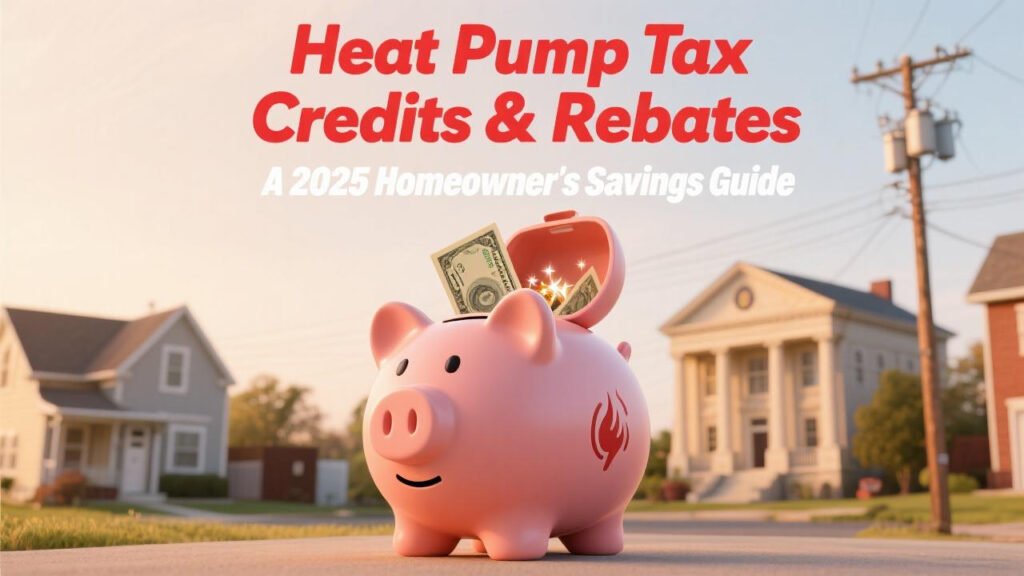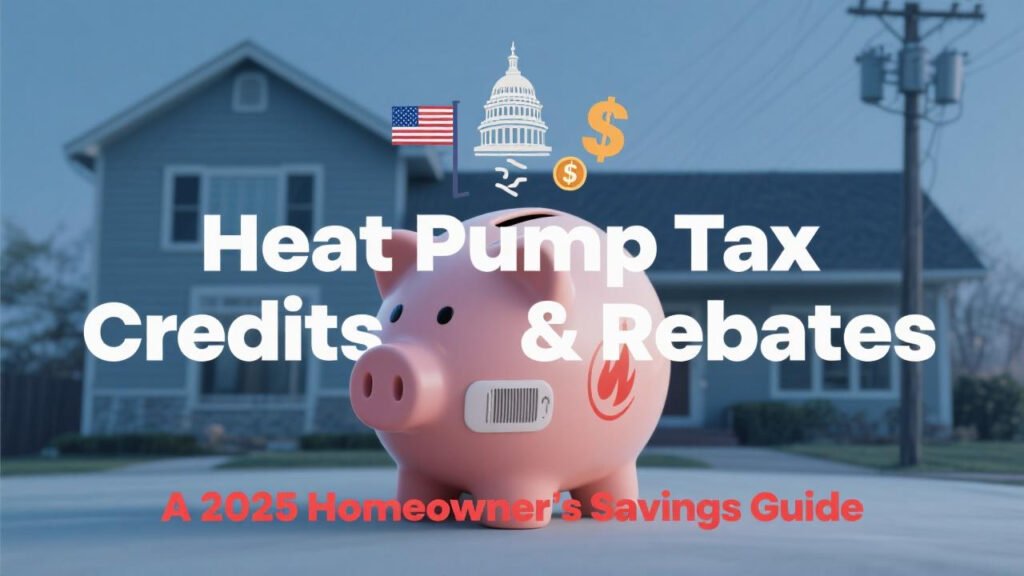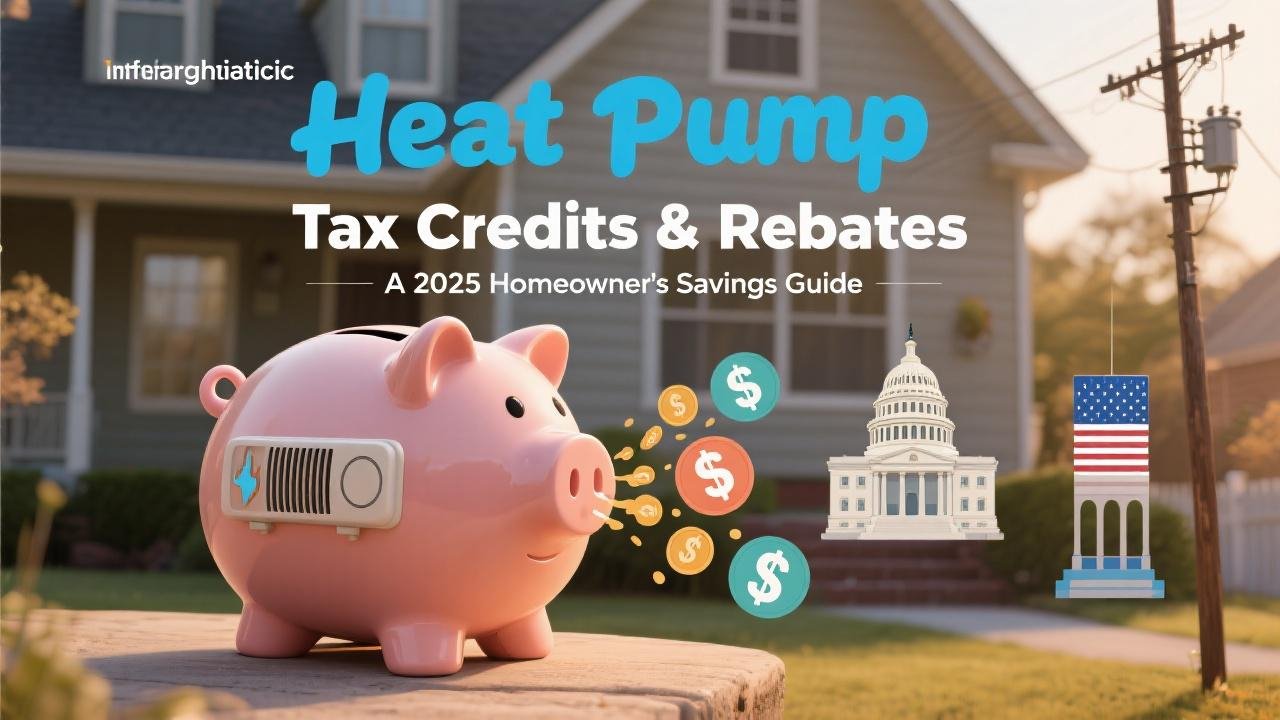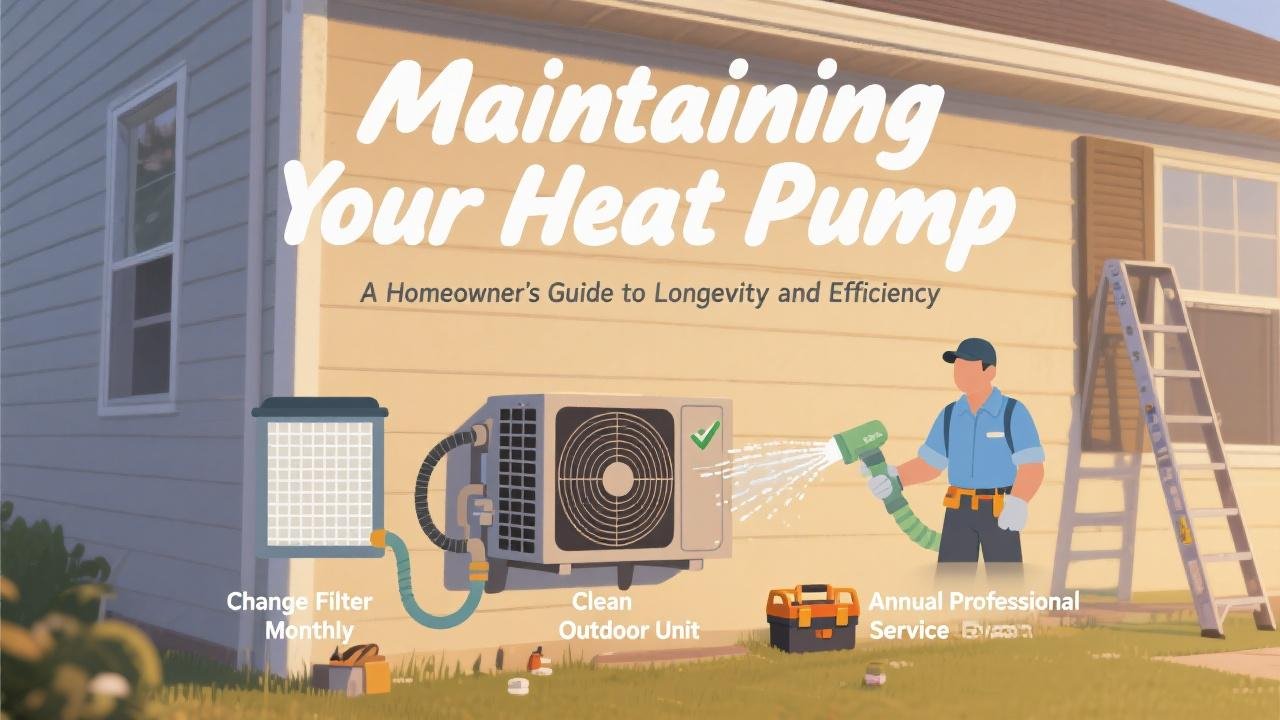Making Efficient Home Comfort More Affordable
Upgrading to a high-efficiency heat pump in 2025 is a smart move for lowering your energy bills and reducing your carbon footprint. But the upfront cost of these advanced HVAC systems can be a concern for many homeowners. The good news is that a combination of federal tax credits, state programs, and local utility rebates can significantly reduce the net cost of your heat pump installation, making this energy-efficient upgrade more accessible than ever. This guide will help you navigate the landscape of heat pump incentives available in 2025.
Understanding these financial aids is key, and resources like the ENERGY STAR website and DSIRE (Database of State Incentives for Renewables & Efficiency) are invaluable tools in this process.
Federal Tax Credits: The Big Savers from the Inflation Reduction Act
The Inflation Reduction Act (IRA) of 2022 significantly enhanced federal tax credits for energy-efficient home improvements, including heat pumps. These credits are available to homeowners for systems purchased and installed through 2032.
1. Energy Efficient Home Improvement Credit (Section 25C):
* Benefit: This credit allows homeowners to claim 30% of the cost of qualified energy-efficient heat pumps, up to a maximum of $2,000 per year.
* Eligibility Requirements for 2025:
* The heat pump (both air-source and geothermal, though geothermal has a separate, more generous credit) must be ENERGY STAR Most Efficient certified. This is a key requirement starting in 2025.
* The heat pump must be installed in your primary residence (the home you live in most of the time).
* You will need a Product IdentificationNumber (PIN) for the qualifying equipment when filing your taxes.
* Annual Limit: The $2,000 limit for heat pumps is part of an overall annual aggregate limit of $3,200 for all energy-efficient home improvements under this credit. However, heat pumps, heat pump water heaters, and biomass stoves/boilers have their own combined annual limit of $2,000 within that $3,200.
* How to Claim: File IRS Form 5695, “Residential Energy Credits,” with your annual tax return.
2. Residential Clean Energy Credit (Section 25D) – For Geothermal Heat Pumps:
* Benefit: This credit offers 30% of the total installation cost for ENERGY STAR certified geothermal heat pumps, with no dollar cap. This is significantly more generous than the credit for air-source heat pumps.
* Eligibility:
* Applies to systems placed in service between 2022 and 2032. The credit percentage phases down to 26% in 2033 and 22% in 2034.
* Can be claimed for your primary or secondary U.S. residence.
* The geothermal heat pump must meet ENERGY STAR requirements in effect at the time of purchase.
* How to Claim: Also claimed using IRS Form 5695.

Federal Rebate Programs (State-Administered): HOMES and HEAR
The Inflation Reduction Act also established two significant rebate programs to be administered by State Energy Offices, aimed at making energy upgrades more affordable, especially for low- and moderate-income (LMI) households. The availability and specifics of these programs will vary by state as they are rolled out.
1. Home Efficiency Rebates (HOMES) Program:
* Focus: Incentivizes whole-home energy-saving retrofits, including heat pump installations as part of a larger efficiency upgrade.
* Rebate Amounts: Based on modeled or measured energy savings. Rebates can be up to $4,000 for 20-34% energy savings, or $8,000 for ≥35% savings. These amounts are doubled for LMI households (those earning less than 80% of the Area Median Income – AMI).
* Status: States are in the process of applying for funds and developing their programs. Some states, like California and Texas, are targeting program launches or full implementation in 2025 or 2026. Check your State Energy Office website for the latest updates.
2. Home Electrification and Appliance Rebates (HEAR) Program:
* Focus: Provides point-of-sale rebates for high-efficiency electric appliances, specifically for LMI households.
* Rebate Amounts for Heat Pumps: Up to $8,000 for an ENERGY STAR certified electric heat pump for space heating and cooling.
* Eligibility: Generally for households with income at or below 150% of the AMI.
* Status: Similar to HOMES, states are developing their HEAR programs. Some states like California have begun partial rollouts, with broader availability expected through 2025 and beyond. These rebates can often be combined with tax credits.
State and Local Utility Rebates: Layering Your Savings
Beyond federal incentives, many states and local utility companies offer their own rebates for installing high-efficiency heat pumps.
* How to Find Them:
* DSIRE (Database of State Incentives for Renewables & Efficiency): This is the most comprehensive national database for state, local, utility, and federal incentives for renewable energy and energy efficiency. You can search by state to find programs relevant to you.
* ENERGY STAR Rebate Finder: The ENERGY STAR website has a rebate finder tool where you can enter your zip code to find local offers on certified products, including heat pumps.
* Your Local Utility Company’s Website: Many utilities list their energy efficiency rebates directly on their websites.
* Typical Amounts: These rebates can range from a few hundred to over a thousand dollars, depending on your location and the efficiency of the heat pump installed. For example, NYSERDA in New York offers average incentives of $100-$400 for partial home solutions and $2,000-$3,000 for whole home heat pump solutions, in addition to federal credits.

Important Considerations for Maximizing Incentives:
- Eligibility Requirements: Pay close attention to all eligibility criteria for each incentive (e.g., income limits for HEAR, primary residence for 25C tax credit, specific efficiency ratings like ENERGY STAR Most Efficient).
- Documentation: Keep meticulous records of all purchases, installation invoices, contractor information, and any required certification documents (like AHRI certificates or ENERGY STAR labels). You’ll need these for tax filings and rebate applications.
- Timing: Some rebates are point-of-sale (instant), while tax credits are claimed when you file your annual taxes. Understand the timing for each. For some IRA rebates, purchases made before a rebate is reserved may not be eligible.
- Combining Incentives (Stacking): In many cases, you can combine federal tax credits with state and local rebates to maximize your savings. However, be aware that some utility rebates might be subtracted from your qualified expenses when calculating federal tax credits if they are considered a purchase-price adjustment.
- Work with Qualified Contractors: Many incentive programs require installation by licensed and sometimes specially certified contractors. Ensure your chosen HVAC professional is aware of and can help you navigate local incentive programs.
Making High-Efficiency HVAC Attainable
The array of tax credits and rebates available in 2025 makes upgrading to an energy-efficient heat pump a more financially attractive proposition than ever before. By leveraging the substantial federal tax credits offered through the Inflation Reduction Act, and by seeking out state and local utility rebates, homeowners can significantly reduce the upfront cost of these advanced systems.
Careful research using resources like DSIRE and ENERGY STAR, along with consultation with knowledgeable HVAC professionals (who might be found through services that vet local energy experts, akin to how EnergySage vets solar installers ), will help you identify and secure all the incentives you’re eligible for. This due diligence will ensure you not only enjoy enhanced home comfort and lower energy bills but also get the best possible deal on your new heat pump.



